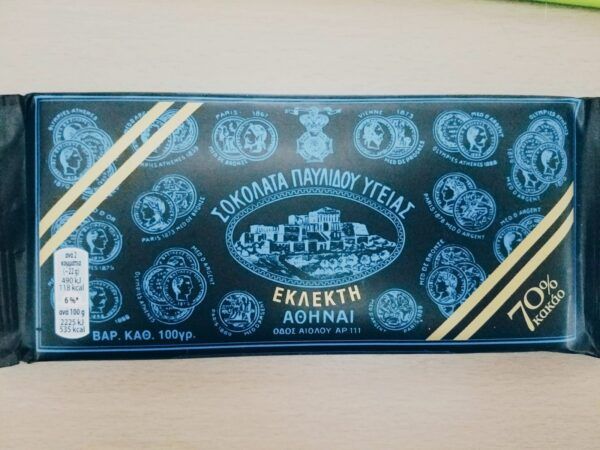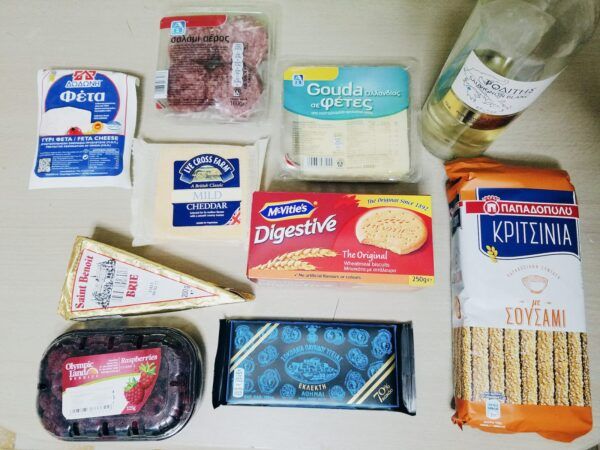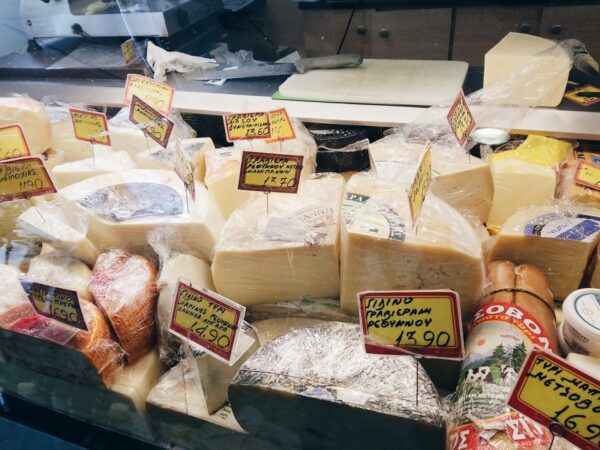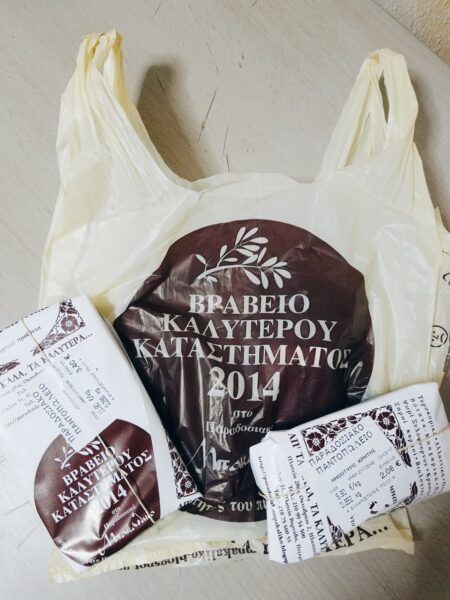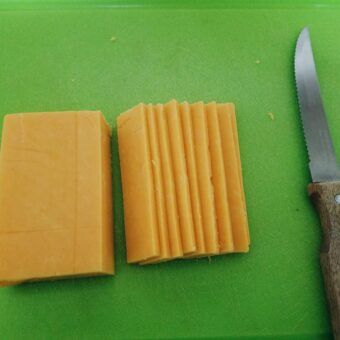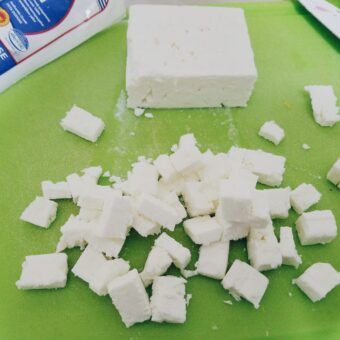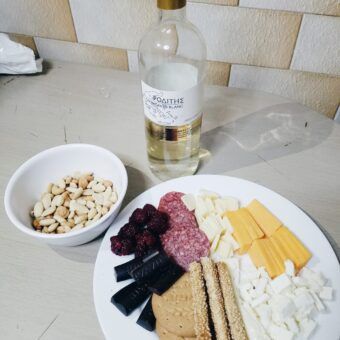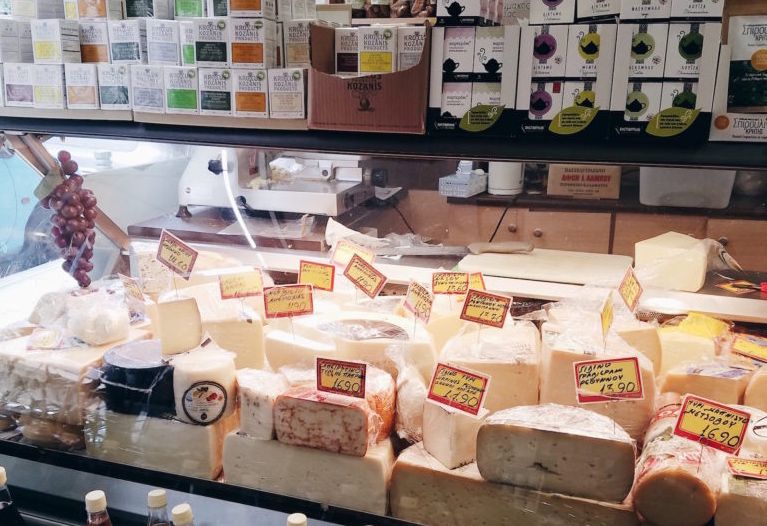
How to Make the Ultimate Greek Cheese Platter
The Greeks LOVE their cheese. Since being here, I’ve had cheese in Tiropita (cheese pie), crumbled on salads, and in Spanikopita (spinach pie), and every bit of each has been delicious. It is so plentiful in the meals here, and even a part of Greek history. Ancient Greeks had a god, Aristaios, dedicated to the craft of making cheese! In order to do my part in this homage to cheese, I decided to put together my own Greek cheese platter. I absolutely love making cheese platters for myself, friends, or for entertaining guests. They are very easy to make and you can’t really mess them up!! Plus, they taste delicious.
Step 1: Source Ingredients
When making cheese platters, I typically try to include 3 to 4 types of cheese. Usually, its good if these cheeses are different consistencies (soft, medium, or hard), but that’s definitely not necessary! Go with whatever suits your taste buds. In making my platter, I chose Gouda, Mild Cheddar, Brie, and of course Feta. This wouldn’t be Greek without Feta. I cheated a little bit by choosing the cheeses that had their names written in English. Greek substitutions for these can include Kasseri, as a medium-hard cheese, Manouri or Anthotiros, as a softer cheese, or Graviera, as a hard cheese. To complement my cheeses, I also included Digestive biscuits (a scrumptious European brand suggested to me by my Danish roommate. Thanks, Emilia!), sesame seed bread sticks (kritsinia), salami, dark chocolate, raspberries, cashews, almonds and white wine.
- Salted cashews and almonds
- Dark Chocolate
- All the ingedients
The white wine I included is a Roditis-Sauvignon Blanc, bottled from the Peloponnese region of Greece. This blend of Roditis and Sauvignon Blanc offers a unique taste that perfectly accompanies the cheese platter’s flavors. Roditis wine comes from pink-tinged white grapes and usually has a crisp citrus flavor that balances perfectly with the fruity, green-graped Sauvignon Blanc. A sip of it culminates in a rich but refreshing aftertaste!
I ventured to a Greek deli, Paradosiako Mpakaliko (Παραδοσιακο Μπακαλικο), in order to try and find some of the Greek substitutes I had mentioned. I was successful in finding Kasseri and Anthotiros! While it was difficult ordering cheese in the few Greek words that I knew, the woman helping me was very patient and sympathetic to my faulty attempts. I really enjoyed getting my food in this small, authentically Greek store, as I am used to quickly getting everything at the grocery stores where I can pick out the English packaging. And both cheeses were worth the effort because they were a delicious alternative!
- Cheese counter at the deli
- Close up of Cheese
- deli goods
Step 2: Prepare Ingredients
There really aren’t any rules as to how to slice the cheeses in a cheese platter, which makes it all the more fun and easy to make. I usually take creative freedom and cut them as thick or thin as I desire and in what shape I prefer to eat them.
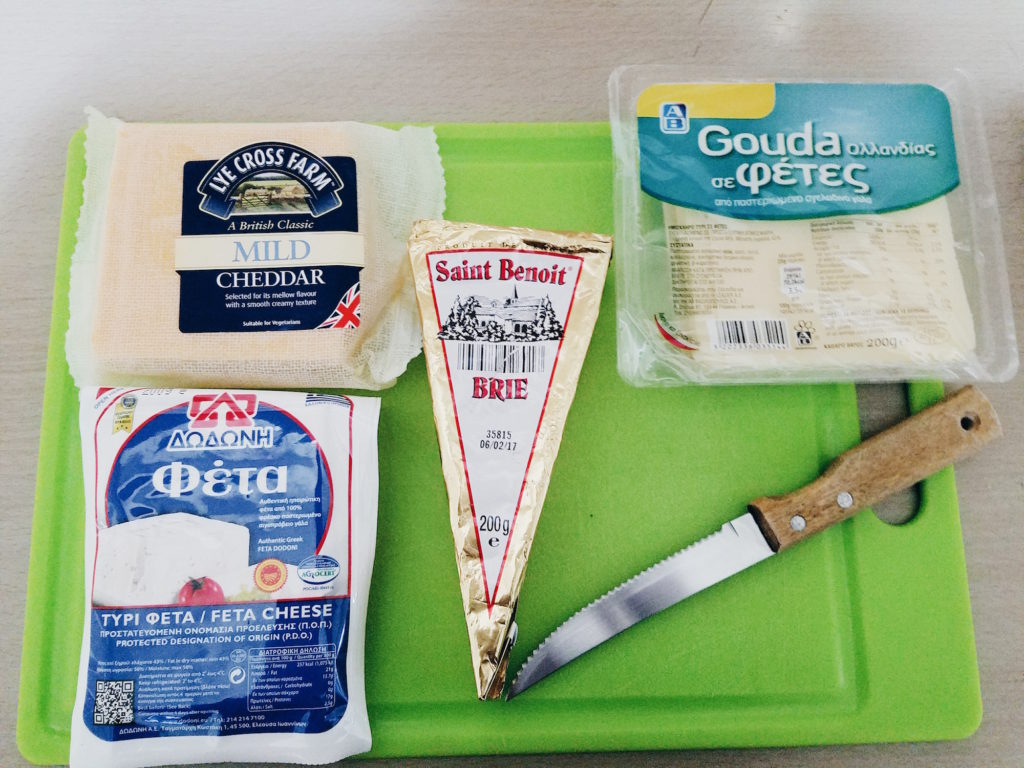
Cutting board
- Gouda
- Mild Cheddar
- Brie
- Cubed Feta
Step 3: Assemble cheese platter
This is the most fun part! You have to make all this food look aesthetically pleasing and ready to eat. The balance of flavors between all the different types of ingredients is so satisfying. And of course you can make any substitutions! A fruit, chocolate, nut, meat, bread, and of course wine are ideal accompaniments for my cheese plates, but Kalamata olives or Greek honey would have been great additions as well. Experiment and see what you like best! Kalí óreksi!
- Close up of all ingredients laid out
- Mixed nuts and white wine
- Finished cheese platter!




